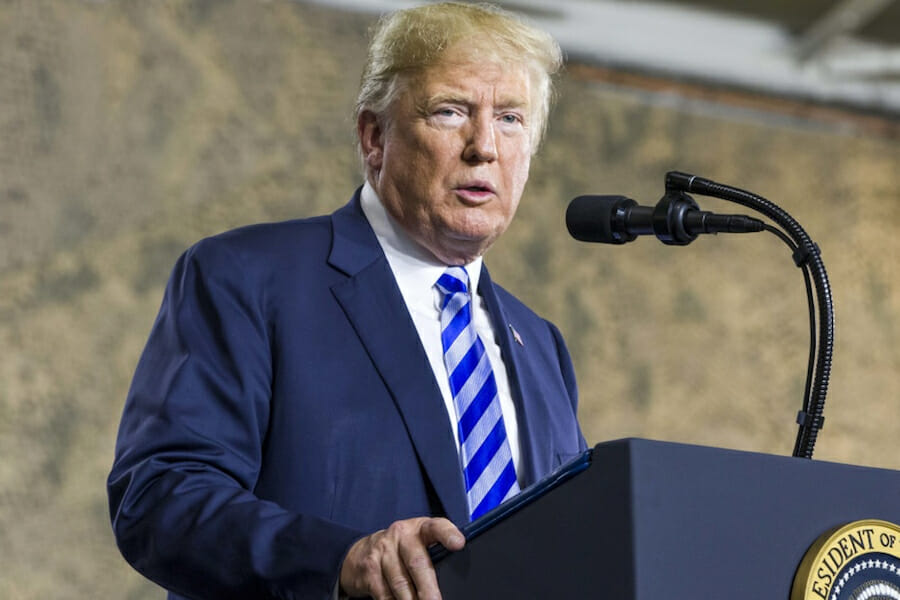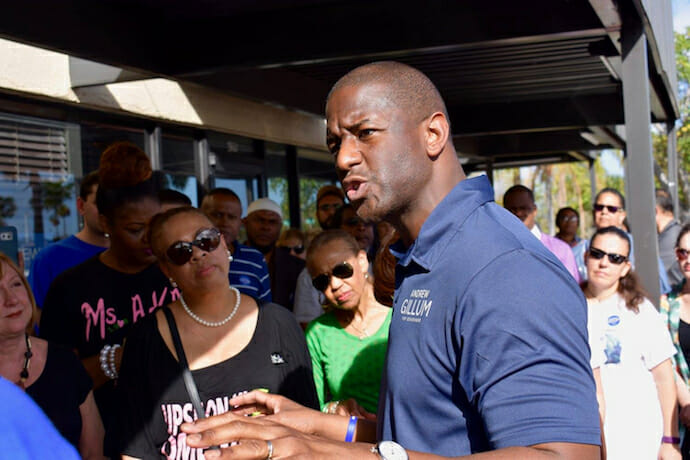
Politics
How a Midterm Success May Portend Defeat in 2020
The upcoming mid-term elections are being held in the context of rampant polarization, with moderates on both camps struggling to prevail over their extremist party members and, in many instances, feel obliged to radicalize their discourse so as to stay ahead in the race.
A case in point was illustrated by the results of the recently-held gubernatorial primaries in Florida, the significance of which can hardly be overstated. The Sunshine State is indeed the largest swing state, one which contributed to tilting the balance in favor of Donald Trump in 2016. And it so happens that, in both parties Florida primaries, the front-runner was someone identified with radical or populist points of view.
On the Democratic side, the winner who defied the polls, Tallahassee Mayor Andrew Gillum, campaigned on a Sanders-blessed platform: abolishing the Immigration and Customs Enforcement (ICE) agency “in its current form,” imposing corporate tax hikes in his home state, introducing single-payer health care and nearly doubling the minimum wage. These issues – which do not reflect the centrist-Democrats’ policy agenda – figure prominently on Gillum’s agenda.
Polarization was not absent either in the rhetoric intoned by the successful candidate at Florida’s GOP gubernatorial primaries, Ron DeSantis. A populist conservative and self-confessed supporter of Donald Trump, DeSantis released a spot in which he appeared reading the Art of the Deal to his son and building a wall with his daughter. Needless to say, this is not the kind of advertisement that would appeal to uncommitted voters – not even to Republicans critical of the incumbent president (those who Trump’s supporters pejoratively categorize as RINOs, i.e. “Republicans in Name Only”).
Gillum and DeSantis are not the only polarizing political figures who have prevailed over moderate candidates in this year’s primaries. On the Democratic side, mention deserves to be made of Alexandria Ocasio-Cortez and Rashida Tlaib, who, with a Sanders-like impetuosity, do not hide their liking for so-called “democratic socialism.” Add to this the fact that seven anti-establishment candidates won the Democratic primaries for the senate in the state of New York, giving a boost to progressives’ hope to be able to decisively influence the party’s agenda in the period ahead.
For sure, the overall outcome of Democratic primaries consistently demonstrates that radicals do not have the upper hand in that party: 39 out of the 41 candidates supported by the pro-establishment Democratic Congressional Campaign Committee successfully passed the hurdle of the primaries. Progressives have nonetheless succeeded in compelling establishment party peers to push their narrative further to the left. This was conspicuous in the case of NY Gov. Andrew Cuomo, who scored a resounding victory over progressive Cynthia Nixon but only after moving to the left himself.
A still more clear-cut polarization can be perceived in the GOP, where Trump-supported candidates – a number of whom go as far as trying to emulate the president’s style and injurious rhetoric – have been beating moderate Republicans in this year’s primaries. Of the 37 candidates supported by Trump in the GOP primaries, all but two won that race. It is little wonder that some GOP candidates who used to be Trump critics, or who had distanced themselves from the incumbent president such as Martha McSally, have been joining the camp of Trump loyalists.
This ongoing surreptitious polarization is poised to have implications for the 2020 presidential contest. Here is why.

The party that feels vindicated this November will be tempted (indeed, forced) to take account of its radical or populist wing and adapt its strategy accordingly, possibly moving further away from the center – if only because this wing will have grounds to claim its due and its right to have a major say in the choice of the party’s political platform and candidates for 2020.
The problem is, pressure from the polarizing wing may turn out to be a handicap for the midterm winner to attract moderate and uncommitted voters in 2020. That phenomenon was seen at the 2016 elections: to secure the support of Bernie Sanders’ enthusiasts, Hillary Clinton made a turn to the left in her rhetoric and program, impairing thereby her ability to reach out to center-leaning voters.
The opposite will likely happen with the party perceived as the loser this November: its moderate branch will be in a strong position to invoke the need for a lurch to the center and for the adoption of a conciliatory tack suited to entice swing voters.
The critical question is: how to characterize a performance at the midterms as successful?
With Democrats, increasing the number of seats they hold in Congress will not be enough for them to be able to vaunt their performance at the midterms. As Robert Johnson recalls in an op-ed posted at The Hill, “[since 1934] incumbents have only gained House seats in three elections and Senate seats in five elections.”
To claim victory and feel vindicated by their strategy, Democrats will actually have to take, as a minimum, the additional 23 seats they need so as to control the House of Representatives – not a long shot, truth be said.
If that expectable outcome finally materializes, it is a safe bet that progressives will consolidate their weight in the Democratic Party. This is all the more so as a success of that party at the midterms would owe much to the strong, over-proportional involvement, mobilization and funding of the “progressive” constituency.

Progressives even have a readymade argument in favor of radicalizing the party in case of a Democratic victory this November. As William A. Galston, writing in The Wall Street Journal, puts it referring to an eventual Gillum victory in Florida: “If this kind of appeal works among Democratic midterm voters, who are less likely to turn out in nonpresidential years, then it should work even better when the presidency is at stake. It would demonstrate that in today’s polarized party system, mobilizing voters with intense preferences is more effective than persuading voters with more muted views.”
Should Democrats fall short of seizing control of Congress, there likely will be a strong pressure from within their party to move toward a moderate, centrist program and away from any hint of the progressive, “democratic socialism” narrative.
The same dynamics applies to the GOP. If it minimizes losses, that is, if it manages to keep control of Congress – which is extremely unlikely, yet not impossible, scenario (remember that polls used to give Hillary Clinton a comfortable lead over Donald Trump ahead of the 2016 presidential election) – conservative populists within that party, i.e. the staunch supporters of the president and fans of his aggressive, conflict-ridden rhetoric, will keep the upper hand and be in a position to impose the same strategy, and the same Trumpian style, in the 2020 contest. Again, not the kind of tack suited to attract undecided voters.
If, on the contrary, as is widely expected, Republicans lose the control of the House and possibly the Senate, there may be a mutiny of the moderate, pro-establishment camp within the GOP, which will push the incumbent president to give up his counterproductive, injurious narrative – if only to be able to play more persuasively the role of the victim by a Democratic-led Congress determined to block the Executive Branch. And in case that toning down the rhetoric proves incompatible with the incumbent president’s inner self (as may most likely be the case), expect no shortage of moderate Republicans willing to primary Trump in 2020.
To summarize: the party considered to be the loser in November will likely be compelled to adopt a more conciliatory, moderate strategy and tone down rhetoric for the 2020 showdown. By doing so, the midterm loser will be better equipped for 2020 than the winner to attract in 2020 the support of uncommitted voters and moderates – who represent a nonnegligible 35% of the electorate as per a Gallup poll undertaken earlier this year.
Make no mistake: many things other than the midterm results could and will contribute to shape the direction and choice of candidates at the 2020 presidential level. Still, for the reasons outlined above, these midterms – characterized by the increased weight of polarizing forces across the U.S. political spectrum – could set up a built-in mechanism whereby the party that will be in a position to claim victory in November may become the loser in 2020.

